Yoko Yamakata
FoodMLLM-JP: Leveraging Multimodal Large Language Models for Japanese Recipe Generation
Sep 27, 2024



Abstract:Research on food image understanding using recipe data has been a long-standing focus due to the diversity and complexity of the data. Moreover, food is inextricably linked to people's lives, making it a vital research area for practical applications such as dietary management. Recent advancements in Multimodal Large Language Models (MLLMs) have demonstrated remarkable capabilities, not only in their vast knowledge but also in their ability to handle languages naturally. While English is predominantly used, they can also support multiple languages including Japanese. This suggests that MLLMs are expected to significantly improve performance in food image understanding tasks. We fine-tuned open MLLMs LLaVA-1.5 and Phi-3 Vision on a Japanese recipe dataset and benchmarked their performance against the closed model GPT-4o. We then evaluated the content of generated recipes, including ingredients and cooking procedures, using 5,000 evaluation samples that comprehensively cover Japanese food culture. Our evaluation demonstrates that the open models trained on recipe data outperform GPT-4o, the current state-of-the-art model, in ingredient generation. Our model achieved F1 score of 0.531, surpassing GPT-4o's F1 score of 0.481, indicating a higher level of accuracy. Furthermore, our model exhibited comparable performance to GPT-4o in generating cooking procedure text.
An experimental framework for designing document structure for users' decision making -- An empirical study of recipes
May 02, 2023
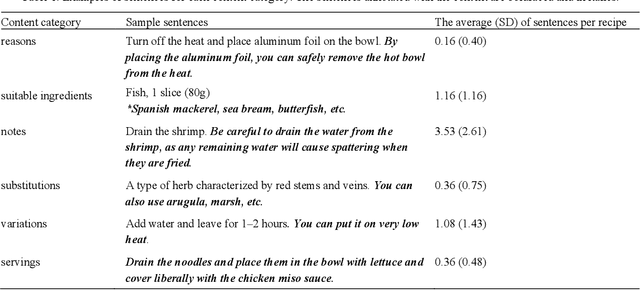
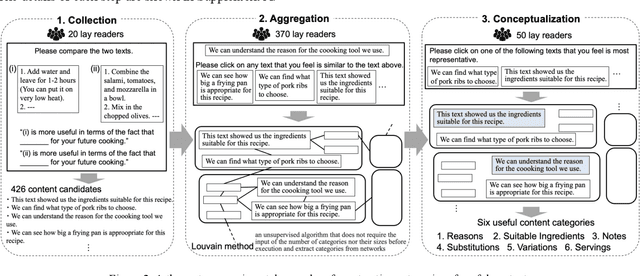

Abstract:Textual documents need to be of good quality to ensure effective asynchronous communication in remote areas, especially during the COVID-19 pandemic. However, defining a preferred document structure (content and arrangement) for improving lay readers' decision-making is challenging. First, the types of useful content for various readers cannot be determined simply by gathering expert knowledge. Second, methodologies to evaluate the document's usefulness from the user's perspective have not been established. This study proposed the experimental framework to identify useful contents of documents by aggregating lay readers' insights. This study used 200 online recipes as research subjects and recruited 1,340 amateur cooks as lay readers. The proposed framework identified six useful contents of recipes. Multi-level modeling then showed that among the six identified contents, suitable ingredients or notes arranged with a subheading at the end of each cooking step significantly increased recipes' usefulness. Our framework contributes to the communication design via documents.
Noisy Annotation Refinement for Object Detection
Oct 20, 2021



Abstract:Supervised training of object detectors requires well-annotated large-scale datasets, whose production is costly. Therefore, some efforts have been made to obtain annotations in economical ways, such as cloud sourcing. However, datasets obtained by these methods tend to contain noisy annotations such as inaccurate bounding boxes and incorrect class labels. In this study, we propose a new problem setting of training object detectors on datasets with entangled noises of annotations of class labels and bounding boxes. Our proposed method efficiently decouples the entangled noises, corrects the noisy annotations, and subsequently trains the detector using the corrected annotations. We verified the effectiveness of our proposed method and compared it with the baseline on noisy datasets with different noise levels. The experimental results show that our proposed method significantly outperforms the baseline.
Recognition of Multiple Food Items in a Single Photo for Use in a Buffet-Style Restaurant
Mar 03, 2019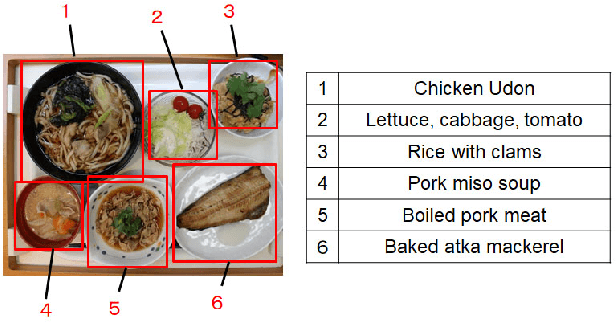
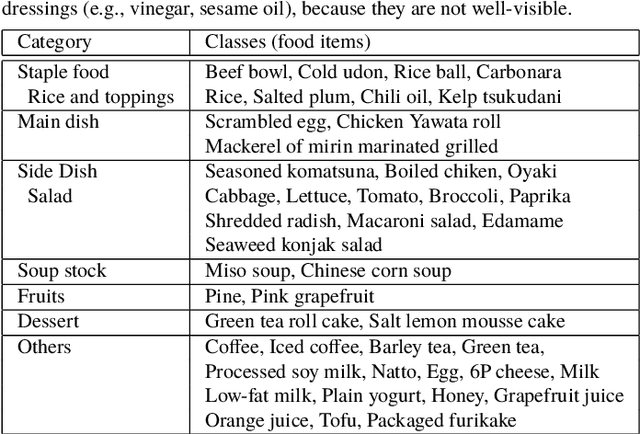
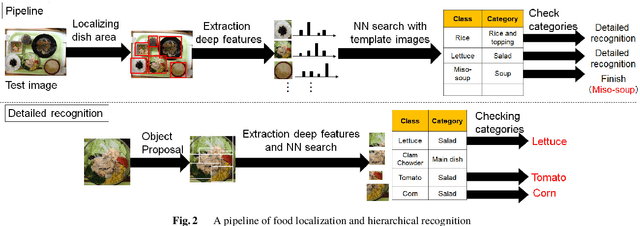
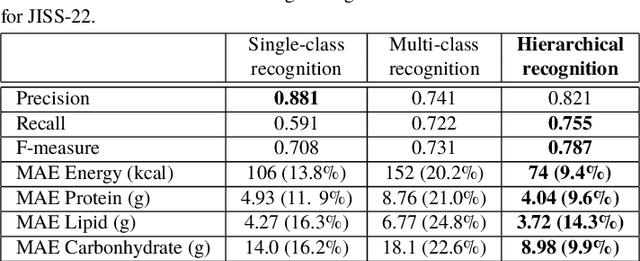
Abstract:We investigate image recognition of multiple food items in a single photo, focusing on a buffet restaurant application, where menu changes at every meal, and only a few images per class are available. After detecting food areas, we perform hierarchical recognition. We evaluate our results, comparing to two baseline methods.
* 5 pages, 7 figures
 Add to Chrome
Add to Chrome Add to Firefox
Add to Firefox Add to Edge
Add to Edge